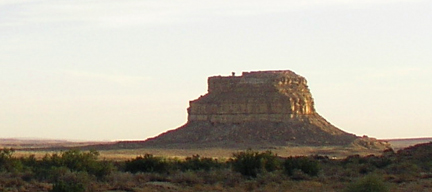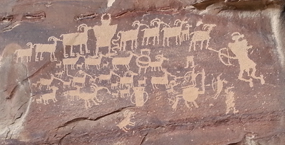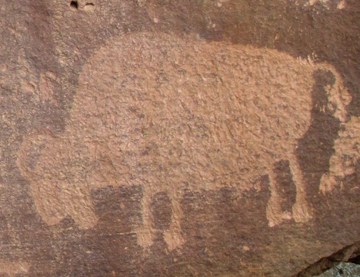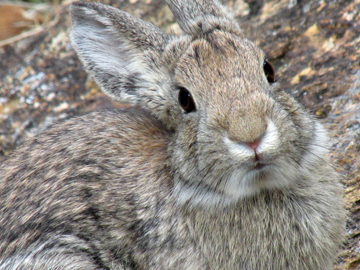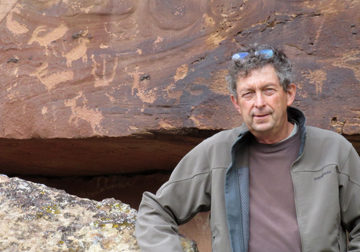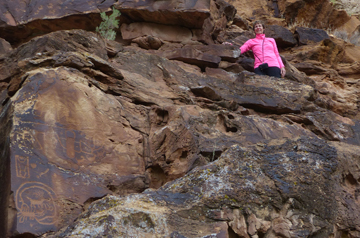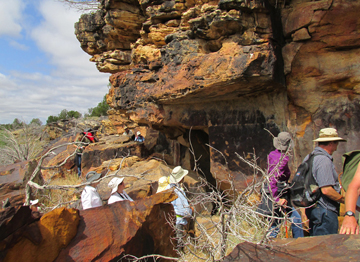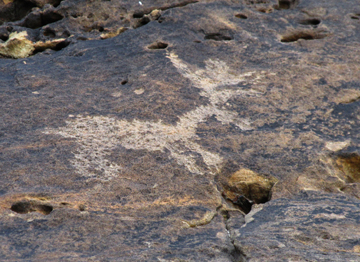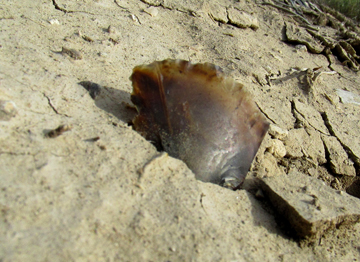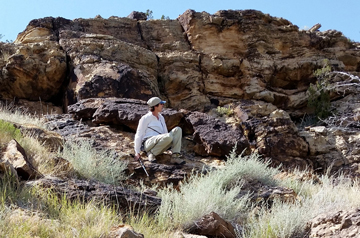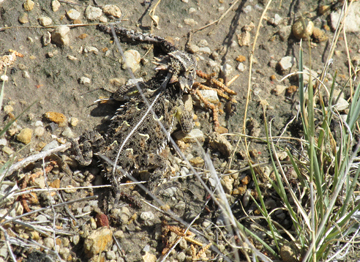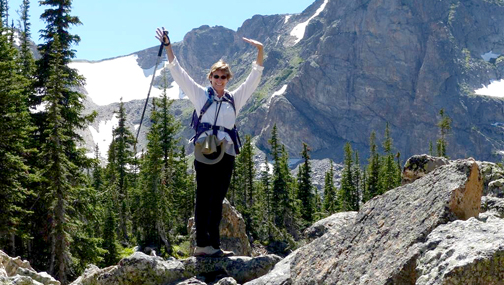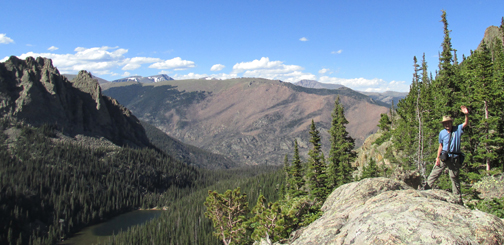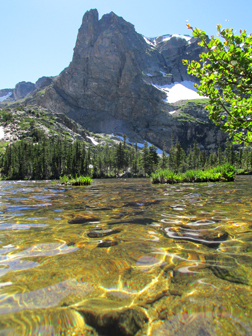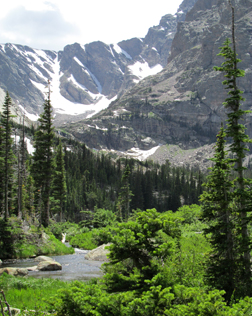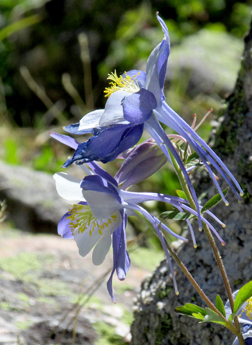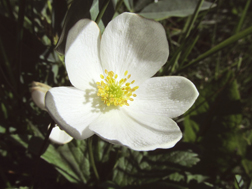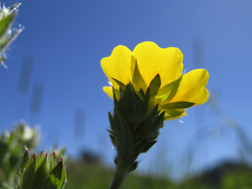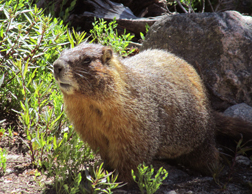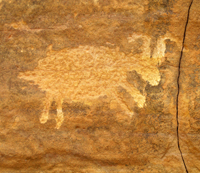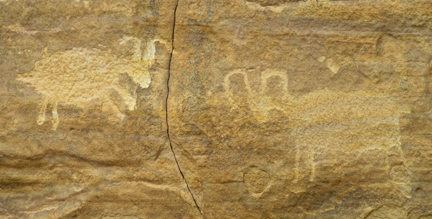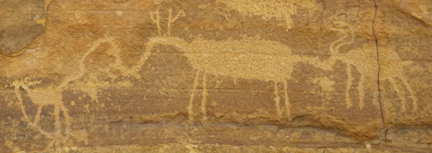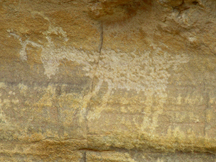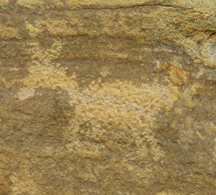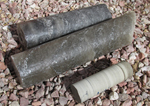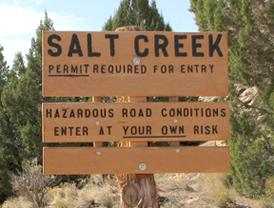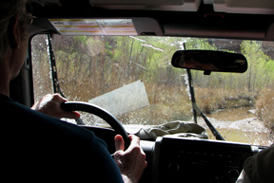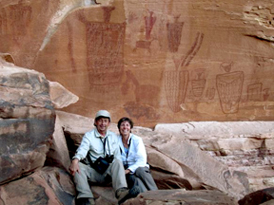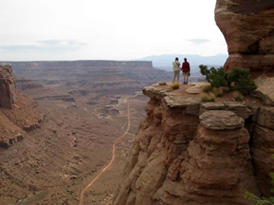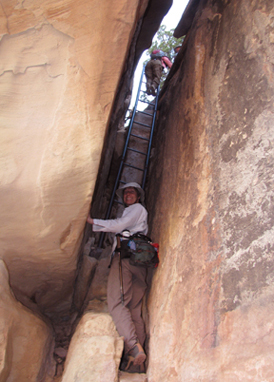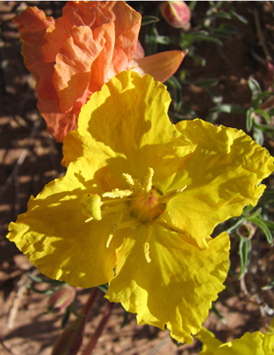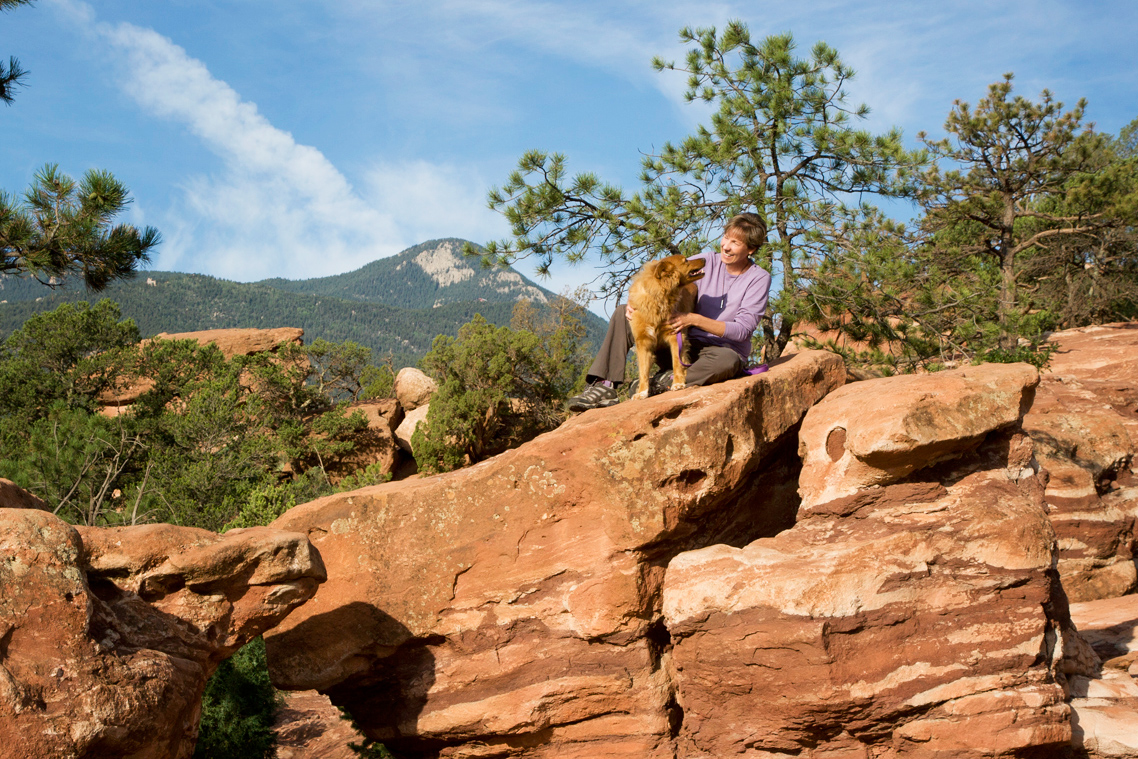Archive for the ‘Adventures!’ Category
Test your “sun and seasons” vocabulary: Perihelion, equinox, apogee, zenith, and more
Prehistoric people in the Southwest carefully watched – and marked – the sun and seasons.
Here’s a great example: On summer solstice at Fajada Butte (in Chaco Culture National Historical Park), a vertical shaft of light – now known as the sun dagger – passes through the center of a spiral petroglyph.
This was no accident. For prehistoric people, tracking the movement of the sun was serious business. For example, the vernal equinox might indicate that it’s time to plant seeds.
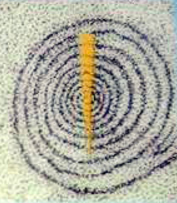
Diagram of sun dagger (shaft of light) and spiral petroglyph by NPS (public domain)
Like our ancestors, I tend to pay attention to the movement of the sun and changing of the seasons.
While searching for information on the upcoming vernal equinox, I ran across this sentence on the website TimeAndDate.com:
“The Earth is closest to the Sun – at its perihelion – about 2 weeks after the December solstice and farthest from the Sun – at its aphelion – about 2 weeks after the June solstice.”
Huh?
As a copywriter, I love the English language, and I love learning new words.
The above sentence kicked up my curiosity a notch, so I took a few minutes to expand my vocabulary.
Here’s a quick “sun and seasons” vocabulary test. See how well you do!
Vernal equinox and autumnal equinox – Also known as spring equinox and fall equinox, this marks the moment the Sun crosses the celestial equator (the imaginary line in the sky above the Earth’s equator). According to TimeAndDate.com, on the equinox, night and day are nearly the same length (12 hours) – but not exactly the same length. The word “equinox” is derived from Latin, meaning “equal night.” The equinox happens every year on March 19, 20, or 21 and on September 22, 23, or 24.
Winter solstice and summer solstice – In the Northern Hemisphere, winter solstice is the shortest day of the year (in terms of sunlight). Conversely, summer solstice is the longest day of the year. Winter solstice occurs on December 20, 21, 22, or 23. Summer solstice occurs on June 20, 21, or 22. According to TimeAndDate.com, the dates vary because our 365-day calendar year is slightly different than the tropical year – the length of time the sun takes to return to the same position in the seasons cycle (as seen from Earth).

TAKE NOTE: You can sprinkle these words into your everyday language. Per Dictionary.com:
– Zenith: “a highest point or state; culmination.”
– Nadir: “the lowest point; point of greatest adversity or despair.”
Zenith and nadir – Pretend you’re standing on the equator at high noon. Directly above you, the sun reaches its zenith – its highest point. Beneath your feet is the nadir, which is diametrically opposite of zenith.
Perihelion and aphelion – According to TimeAndDate.com, when the Earth is closest to the Sun, this is called the perihelion point. This occurs about 2 weeks after winter solstice. Conversely, when the Earth is farthest away from the Sun, this is called the aphelion point. This occurs about 2 weeks after summer solstice. This year’s aphelion is July 3, and the Sun will be 94,505,901 miles away.
Perigee and apogee – TimeAndDate.com explains that, like the Earth’s orbit around the Sun, the Moon’s path around the Earth is also elliptical. The point in the Moon’s orbit that is closest to the Earth is called the perigee and the point farthest from the Earth is known as the apogee. The terms are also sometimes used interchangeably with the Earth’s perihelion and aphelion.
Read More...
Nine Mile Canyon: “The world’s longest art museum”
When Mike and I head out for a roadtrip, we usually point the car southwest. This time, we drove due west to an extremely remote section of Utah called Nine Mile Canyon. In reality, this canyon is 46 miles long. It has been dubbed “the world’s longest art museum,” thanks to many panels of historic and prehistoric rock art (petroglyphs and pictographs). Click to see a map.
Here is the gem of Nine Mile Canyon: A petroglyph panel known as “The Great Hunt”
According to signage at the site: “Scholars believe this extraordinary panel may represent an actual hunting event. … Historians believe this panel depicts a scene in late November or early December when herds of bighorn sheep meet for the fall mating season. This is the only time of the year that rams, ewes, and lambs are all together in the same place. The large trapezoidal horned figure at the top of the [petroglyph] panel is an example of a classic Fremont [culture] rock art style … circa AD 950-1200.”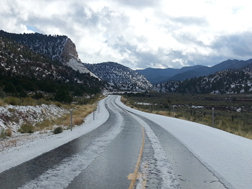
Utah’s squirrely weather didn’t put a damper on our fun…
Although the weather in Colorado can be unpredictable, it seems like Utah takes the cake.
- At the entrance of Nine Mile Canyon, we encounter several inches of hail on the road. (It looks like snow in the picture, but it is hail.)

- Then the sun comes out – hallelujah! We can take time to explore, climb on the cliffs, and take tons of pix.
- Soon dark clouds roll in.

- Then the sky pelts us with rain, sleet, and snow. In just a matter of minutes, we’re walking in a winter wonderland.
- Mother Nature has one more BIG thing to throw our way: A huge boulder rolls into the middle of the road. (It was not there when we entered the canyon!)

Here’s a sampling of what you can discover in Nine Mile Canyon
Note the variety of rock art styles and images including a horse and rider (wearing a headdress), which dates to historic times. Keep in mind that the Spanish brought horses to America, so this type of image helps to date certain petroglyph panels. Other images are undoubtably prehistoric.
All photos by Patrice Rhoades-Baum, except the shot of me exploring the cliff (on the hunt for more rock art), taken by Michael Baum.


Read More...
Prehistoric discoveries
Archaeological field trip at Fort Carson’s Piñon Canyon Maneuver Site
Our local chapter of the Colorado Archaeological Society got a rare treat: A guided tour of prehistoric sites in the normally inaccessible Piñon Canyon Maneuver Site in southeastern Colorado. We were encouraged to poke around to discover rock art (petroglyphs and pictographs), dwellings, food-storage granaries, and scattered stone and ceramic artifacts. Many are approximately 1,000 years old.
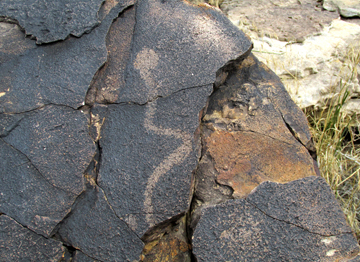 A favorite discovery of the day was this petroglyph rattlesnake.
A favorite discovery of the day was this petroglyph rattlesnake.
Unfortunately, no actual live rattlers were sighted. I say “unfortunately” because I insist that a rattlesnake sighting proves you’re having an adventure. ;>
Here’s a primer on prehistoric southeastern Colorado:
- Throughout prehistoric times, multiple cultures (groups of people) competed for resources (water, plants, and animals) in southeastern Colorado.
- Approximately 1,000 years ago, during what is now called the Diversification Period, agriculture was just getting a foothold in southeastern Colorado. Some cultures were sedentary farmers who stayed year-round. They constructed permanent dwellings in hut-like structures and rock shelters (“caves”) in the rugged outcroppings and ridges. An example is the Apishapa Culture, named after the Apishapa River in southeastern Colorado.
- Other cultures – hunter-gatherers and cross-country traders – moved through the area and often raided the farming communities. They did not construct permanent dwellings, and they made camp in the wide-open valleys. An example is the Barnes Culture, named after an archaeologist who surveyed and excavated these sites.
- Most of the rock art (petroglyphs and pictographs), dwellings, and artifacts we found dated to the Diversification Period, which was about 500 to 900 years ago (approximately 1100 to 1500 AD).
Do you know…
- What is the difference between a petroglyph and a pictograph? Petroglyphs are pecked into the stone (as the rattlesnake rock art image above). Pictographs are painted on stone with long-lasting pigments.
- What do you do when you find a historic or prehistoric artifact? You can carefully pick it up, look at it, and take a picture – then you must put it back down. You never, ever keep it. This is ethical and responsible. And it’s the law.
- Why did I need to receive permission from Fort Carson to publish the following images? Because we must be careful not to divulge the location of ancient sites and artifacts. In fact, I was asked not to share the image of a certain pictograph, because it is considered sacred to several American Indian tribes.
All photos by Patrice Rhoades-Baum except the image of Patrice (on the lookout for more rock art!), taken by Michael Baum.
Read More...
High-altitude adventures in Rocky Mountain National Park
Mike and I celebrated his birthday by spending a few days in Rocky Mountain National Park – a gem in the National Park System. We should not have been surprised by the crowds (but we were) – after all, it was the middle of July on the 100th anniversary of the National Park System!
After negotiating parking and shuttle logistics to access trailheads, we marched up to the Alpine Life Zone at an elevation of about 11,500 feet. Here, at timberline, wildflowers bob in the cool breeze, streams of icy water glitter in the bright sun, and clouds scuttle across the deep-blue sky, casting shadows on rugged mountain peaks.
No crowds up here – just a few other adventurers from around the world, treasuring every facet of this sparkling gem.
Here are a few of my favorite photos. Enjoy!
(All photos by Patrice Rhoades-Baum, unless otherwise noted.)
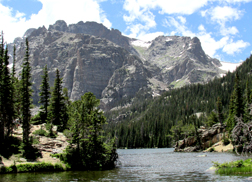
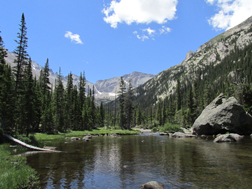
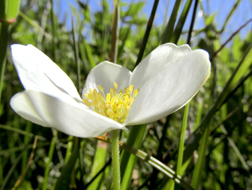
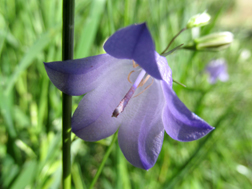
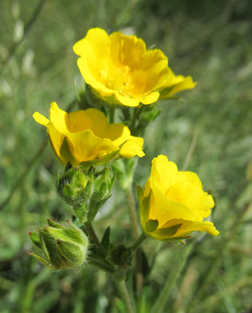
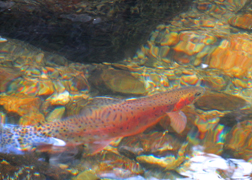
Native to Rocky Mountain National Park, this greenback cutthrout trout is federally listed as endangered. I did not enhance the colors of this guy – he swam into the sunlight and flashed brilliant red!
Read More...
Seeking the “Zookeeper”
Deep in the rugged canyons of southeastern Colorado, hidden between giant boulders and a jagged ledge, is “Zookeeper.”
About 1,000 years ago, a primitive artist (or artists) pecked a stunning mural into a golden sandstone wall. Known as the Zookeeper Site, this rock art panel consists of one mysterious human figure surrounded by 47 wild animals. Is the mystery man a shaman? Or a hunter? Does this petroglyph panel celebrate a successful hunt? Or express hope for future successful hunts?
Here’s what my friend Lawrence L. Loendorf says about the “Zookeeper” figure in his book Thunder and Herds: Rock Art of the High Plains:
“Shown in full-frontal view, the figure has an elongated, ovoid body to which an inverted set of U-shaped legs is attached. Its straight arms project away from the body, and each ends in four disproportionately large, splayed fingers. Attached to the anthropomorphic figure’s right hand is a set of grid-like crossed lines that are larger than the figure itself. The object’s frayed ends suggest it might be a net or snare – or some sort of object of power.”
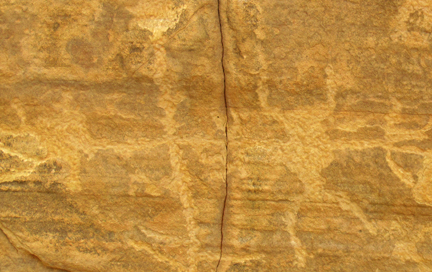
This is “Zookeeper” – the human figure (anthropomorph) that is central to The Zookeeper rock art panel.
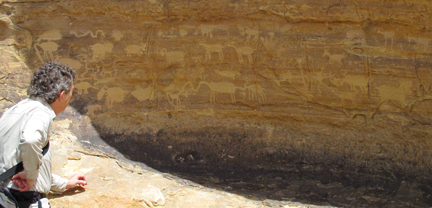
Michael Baum admires The Zookeeper petroglyph panel. Look closely at the right portion of this mural to find the “Zookeeper” figure.
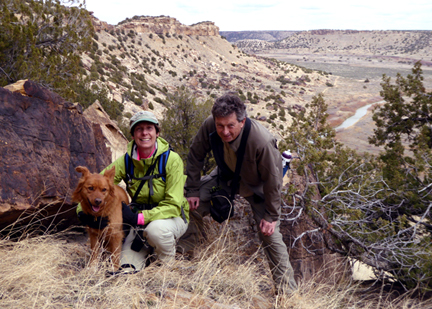
Patrice Rhoades-Baum, Michael Baum and Jake enjoy an adventure in southeastern Colorado (photo by Met Innmon).
Here are details of The Zookeeper petroglyph panel. (Unless otherwise noted, all photos by Patrice Rhoades-Baum)
Read More...
Hanging out in -24 degrees C . . . This is cool science!
A brief report on my visit to the USGS Core Research Center and National Ice Core Lab
One of my brothers, John Rhoades, is a curator at the USGS Core Research Center at the Denver Federal Center. Recently, John gave me a personalized tour of the Core Research Center, along with a chilly visit of the National Ice Core Lab’s main archive freezer. The tour of the freezer was kept brief, thanks to the -24 degrees C temperature!
This science is cool stuff! Here’s an overview…
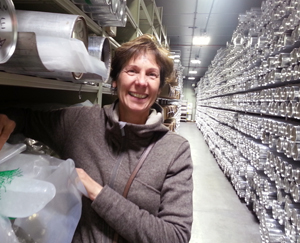
Patrice Rhoades-Baum visiting the main archive freezer at the National Ice Core Lab — briefly — due to the extremely cold temperature!
ICE CORE RESEARCH: Ice cores provide scientists and educators a unique glimpse into our environment. The National Ice Core Lab stores, curates, and studies ice cores recovered from glaciated regions of the world, including the ice core my brother John drilled in Antarctica!
Click HERE to learn more.
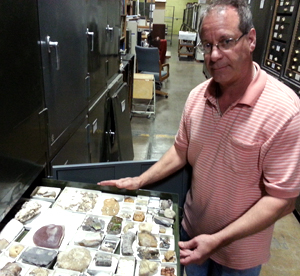
John Rhoades, curator at the USGS Core Research Center, shows a portion of the agency’s impressive fossil collection.
ROCK CORE RESEARCH: The USGS Core Research Center preserves and archives tons of drilled core samples, which are available for research. The cylindrical sections of rock offer geologists and other scientists in government, education, and the gas/oil industry a hands-on view of the rock layers beneath our feet.
Click HERE to learn more.
Read More...
Discovering a dinosaur footprint on “Ammonite Ridge”
Turns out, a sandstone ridge near our house is highly fo![]() ssiliferous.
ssiliferous.
In fact, we’ve dubbed it “Ammonite Ridge,” thanks to the abundant fossils of these ancient ancestors of the nautilus.
Mike and I enjoy exploring the ridge, looking for new discoveries. Recently, we scrambled to the top with some friends.
And look what we found!
Fossils of ammonites, which are extinct marine mollusc animals (most of the fossils we found are 6-8 inches in diameter, some are considerably larger)
Fragments of ancient clamshells
Petrified wood embedded in the sandstone (Melody has her hand on a branch)
An actual dinosaur footprint, which had already been discovered and has been identified as an Ankylosaurus track
Here is a closer look of the Ankylosaurus track. No, it doesn’t look like a footprint – this is one of those times when you scratch your head and say, “How do paleontologists know?” It’s pretty amazing that scientists can figure out this stuff. :>
All photos by Patrice Rhoades-Baum
Read More...
“See you at Peekaboo!” (thoughts on why – and how – to clarify your Big Why?)
We were in middle-of-nowhere Utah…
Soon, our archaeology buddies would emerge from the canyon, wrapping up their 5-day backpacking trip. As arranged, Mike, Paul, and I were picking up Laurie and Terry’s sizable SUV at their starting point. Our mission was to transport the truck and rendezvous at their exit point: Peekaboo Camp.
I climbed into the massive vehicle and slid the key into the ignition. That’s when I saw a note on the seat, scribbled on an old envelope:
Mike and Patrice,
The road to Peekaboo Camp is actually a creek, running high right now.
The ranger said to drive on the right size of the creek – the left side is QUICKSAND.
See you at Peekaboo!
L & T
Drive up a flowing creek? Avoid the quicksand?
Cool!
This roadtrip encompassed all the adventure I love: high-adrenaline four-wheel driving, scrambling on cliffs to hunt for ancient rock art (petroglyphs and pictographs), dramatic Southwestern vistas, and lots of camaraderie, to boot.
Outdoor adventures – big and small, near and far – light my brain on fire and make my heart sing!
For me, ADVENTURE is a “Big Why?”
While creating my 2016 business plan, I listed multiple drivers. Front and center is ADVENTURE. I realized this is one of my answers to the question: Why build your own business?
- I love guiding business owners to clarify their brand. I believe clarity is the rocket fuel to promote and grow your business.
- I love that my business gives me the independence, empowerment, and success I simply could not achieve in the corporate world.
- And I love that Mike and I continue to carve out a life that is invigorating, fulfilling, and adventurous.
What is YOUR “Big Why?”
Did you know 2016 is a leap year? Metaphorically, this could be an important LEAP YEAR for you and your business. At the heart of it all is knowing your “Big Why?”
Here are 3 questions to clarify your “Big Why?”
- Regarding quality of life: What is the lifestyle you want to live? What does it look like? Take a few moments to draw a picture, create a vision board, or jot down a list of activities that, together, create a healthy, fulfilling, well-rounded life for you and your family.
____________________________________________________________________________________________
____________________________________________________________________________________________
____________________________________________________________________________________________
____________________________________________________________________________________________ - Regarding servicing your clients: What is the unique expertise you deliver to your clients (and audience members if you’re a speaker)? As a business owner, you are an expert – you bring a distinctive combination of experience, expertise, and new ideas to the table. Write down the unique expertise you deliver. (Hint: Clarity on this point helps to clarify your brand.)
____________________________________________________________________________________________
____________________________________________________________________________________________
____________________________________________________________________________________________
____________________________________________________________________________________________ - Regarding building your business: What is the “fire in your belly”? Every morning you get up, ready to fight the good fight. What energizes you? Is it serving clients in need? Earning more money? Creating a better life for your family? Sharing your expertise and growing your reputation? Write down the fire in your belly:
____________________________________________________________________________________________
____________________________________________________________________________________________
____________________________________________________________________________________________
____________________________________________________________________________________________
In a few words, can you express your “Big Why?”
___________________________________________________________________________________________________
___________________________________________________________________________________________________
Clarity is the rocket fuel to promote and grow your business – and to create the quality of life you desire.
~ ~ ~ ~ ~ ~ ~ ~ ~ ~ ~ ~ ~ ~ ~ ~ ~ ~ ~ ~ ~ ~ ~ ~ ~ ~ ~ ~ ~ ~ ~ ~ ~ ~ ~ ~ ~ ~ ~
Pictures at Peekaboo Camp
Read More...
In search of rock art and rattlesnakes! View House on Fire and other highlights of our archaeological field trip
I love prowling around the canyons of southeastern Utah, searching for signs of ancient people – and rattlesnakes!
Recently, Mike and I joined other members of the Colorado Archaeological Society to explore a corner of the Four Corners region. One of our destinations, House on Fire, has become fairly well known. Another destination featuring petroglyph-covered boulders is TOP SECRET.
House on Fire: Built perhaps 1,000 years ago by the Anasazi (now called Ancient Puebloans), this dwelling is renowned for its “flames”: spectacular colorations on the sandstone overhang of this pretty, little alcove. As the mid-morning sun crept into the canyon, we were fortunate to witness House on Fire “catch fire.”
Petroglyphs: As noted, the rock art location is TOP SECRET. A wide variety of petroglyphs are pecked into large sandstone boulders. That’s all I can say before the Men in Black take me away.
And the rattlesnakes? Here’s my theory: When you see (or hear) a rattlesnake, you know you’re having an adventure!
There were no sightings this trip. However, I’m positive future field trips will yield a rattlesnake spotting. And who knows? Maybe there will be more than one. That’s when you know you are having a REAL ADVENTURE. :>
Enjoy this quick slideshow!
Highlights of our archaeological field trip by Patrice Rhoades-Baum – Created with Haiku Deck, presentation software that inspires
Read More...
Aloha! Enjoy nature highlights of the Big Island of Hawaii
The Big Island is a nature lover’s paradise!
If you like geckos and lizards, exotic birds, and other critters, you’ll love the Big Island of Hawaii. Just to spice things up, add plunging waterfalls, vibrant botanic gardens, ancient petroglyphs, and an active volcano!
My mother and I visited the Big Island of Hawaii in September, with a quick jaunt to Oahu to see Pearl Harbor.
Take a moment to revel in the wonder and beauty of this tropical paradise.
Aloha! Nature highlights of Hawaii (the Big Island) by Patrice Rhoades-Baum – Created with Haiku Deck, presentation software that inspires
